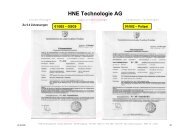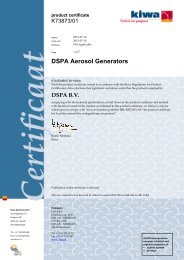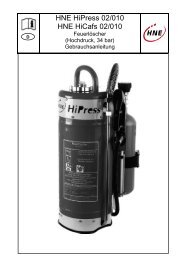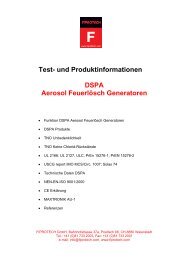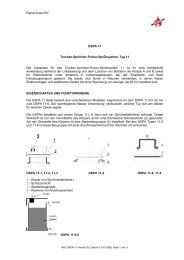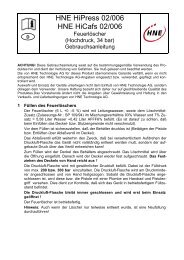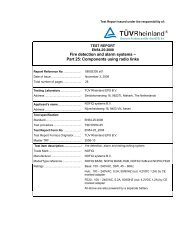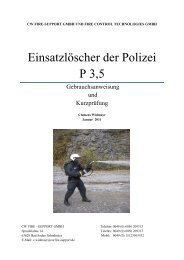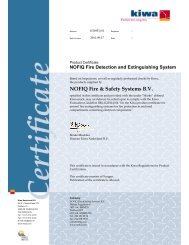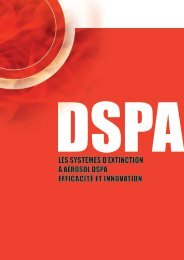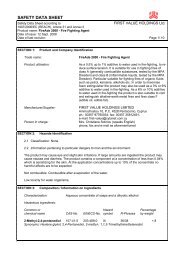FireAde 2000 Hydrocarbon suspension technology - Flame Guard
FireAde 2000 Hydrocarbon suspension technology - Flame Guard
FireAde 2000 Hydrocarbon suspension technology - Flame Guard
Create successful ePaper yourself
Turn your PDF publications into a flip-book with our unique Google optimized e-Paper software.
The new <strong>technology</strong> for fighting fires, toxic vapours and contamination<br />
The absorption of spilled liquids<br />
Flammable hydrocarbon liquids are neutralised by<br />
using a 3% admixing rate.<br />
This opens up the following fields of application:<br />
Neutralisation of spilled fuel<br />
Neutralisation of spilled liquids in refineries, in<br />
the chemical and industrial areas<br />
Neutralisation of fuels in drainage pits<br />
One of the most significant advantages of<br />
<strong>FireAde</strong> <strong>2000</strong> over conventional foam is that<br />
the fuel remains neutralised during the cleaning<br />
phase and the subsequent disposal of the<br />
hazardous substances.<br />
FIRE-FIGHTING<br />
METHODS<br />
A fire is extinguished by removing one of the factors<br />
of the expanded fire tetrahedron model. There are<br />
basic differences between the fire-extinguishing<br />
methods using wetting agents (NFPA 18), foam<br />
in fire classes A and B (NFPA P 1150 or NFPA P 11)<br />
and the fire-fighting method using separation, for<br />
example the chemical medium <strong>FireAde</strong> <strong>2000</strong> (new<br />
NFPA project). These basic differences are explained<br />
below:<br />
Wetting agent<br />
The method of fighting fires with the aid of wetting<br />
agents is based on one main operating principle:<br />
1. Reducing the surface tension<br />
The surface tension of the water is reduced from 72<br />
dyn/cm 2 to less than 22 to 26 dyn/cm 2 .<br />
This reduced surface tension has several decisive<br />
advantages over normal water during fire fighting.<br />
By reducing the surface tension, the size of the<br />
individual water droplets is reduced. The heat of<br />
Normal water: The diagram illustrates how the expansion<br />
capacity of the water is limited by its high surface tension<br />
(72 dyn/cm_), with bridges being formed via the pores, which<br />
in turn prevents water penetration.<br />
a fire is reduced by the fact that the energy is mainly<br />
absorbed by changing the state from liquid to gas.<br />
Small water droplets result in a larger surface area<br />
relative to the volume, which means that the fire<br />
comes into contact with a larger water surface, thus<br />
increasing the conversion of water into water<br />
vapour.<br />
In addition, the water is distributed more rapidly as<br />
a result of the reduced surface tension, so that it<br />
can penetrate deeper into the pores and the<br />
burning material.<br />
Note: Wetting agents cannot form foam films or separate Hydro<br />
Carbon molecules.<br />
Wetting agent: The diagram shows how the surface tension<br />
is reduced by the wetting agent, so that a larger surface is<br />
covered and the water can penetrate the pores of the<br />
thermal loads.<br />
5<br />
®




